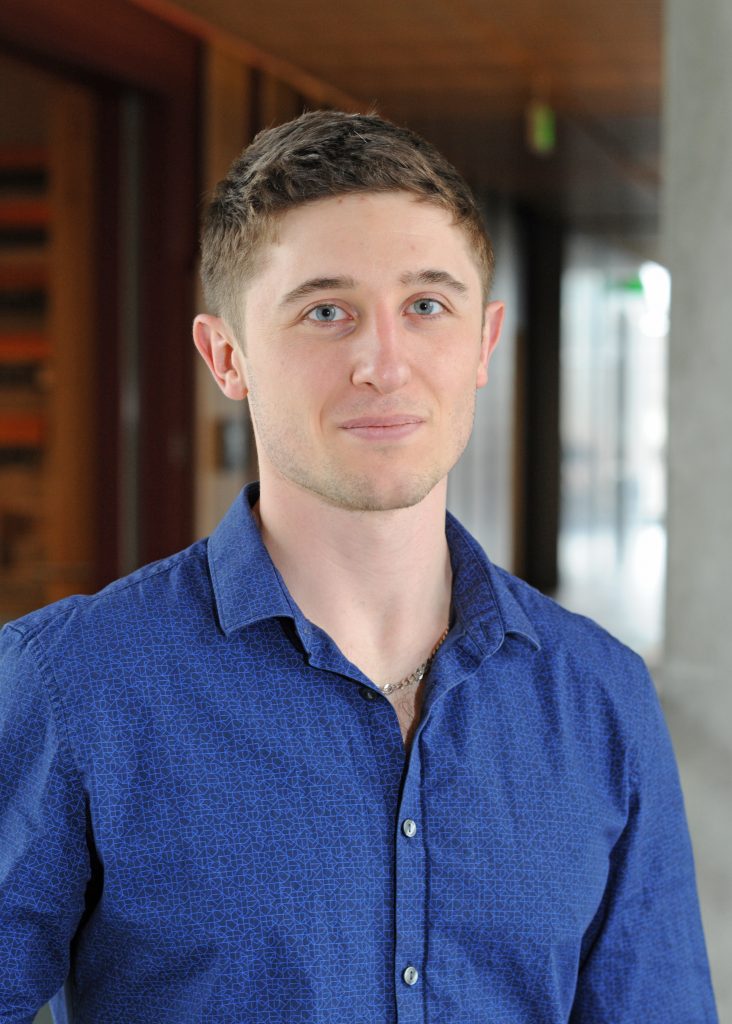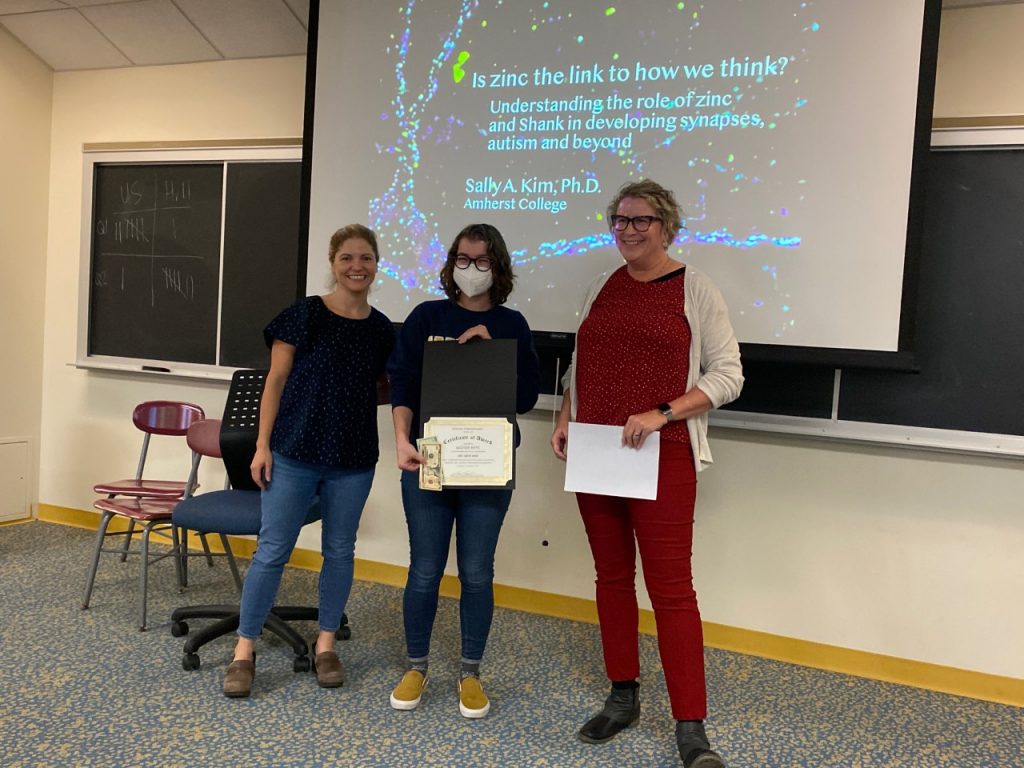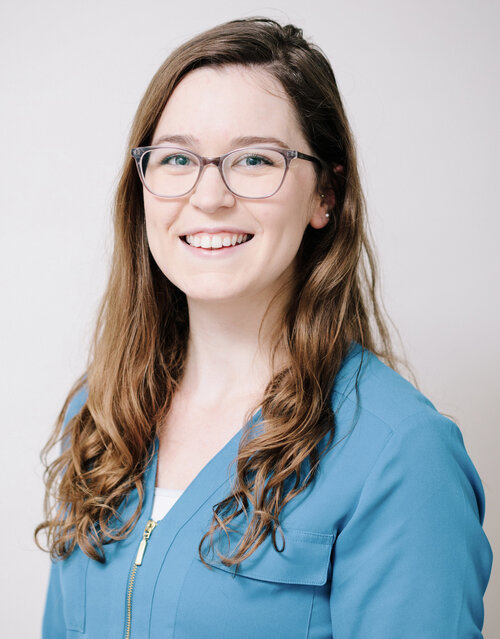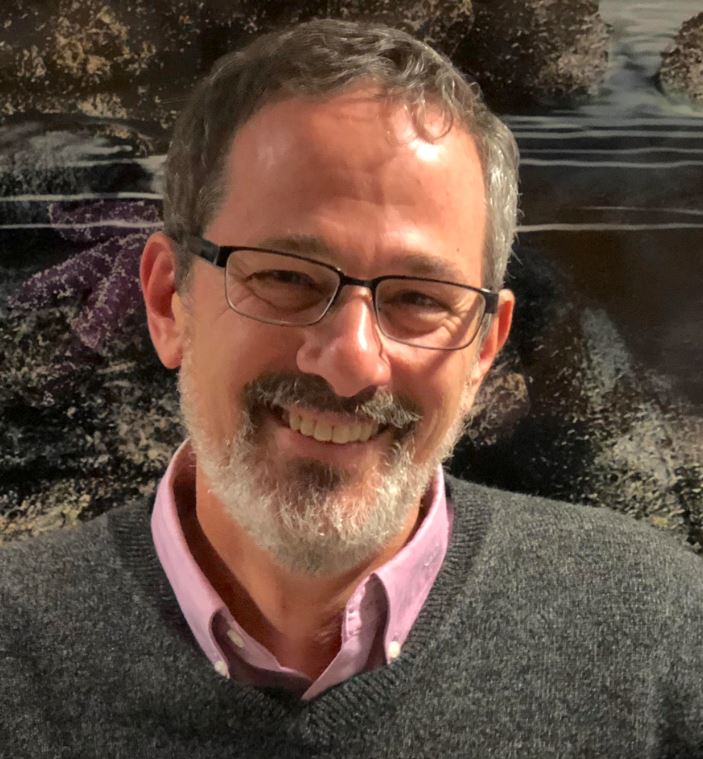
UMass neuroscientists are presenting their research at the Society for Neuroscience Conference in San Diego. Here is a list of titles and authors for those presentations. Click on the number to read the abstract.
028.15. Synaptic protein levels and physiological activity in primary cortical neurons are influenced by time of day.
J. WANG, B. L. ROBERTS, I. N. KARATSOREOS;
031.02. Neuronal cell type mapping in the ring and rhinophore ganglia of a gastropod mollusc using single cell transcriptomics
M. D. RAMIREZ, T. N. BUI, P. S. KATZ
094.07. LC-NE regulation of goal directed behaviours
E. M. Vazey
Mini symposium talk
185.15. Quantitative assessments of neurodevelopmental disorders using deep learning and systems neuroscience techniques
K. DOCTOR, D. WU, A. PHADIS, J. NURNBERGER, Jr, M. PLAWECKI, J. V. JOSE
209.01. Structure and organization of the olfactory system in the mollusc Berghia stephanieae
C. C. TAIT, M. D. RAMIREZ, P. S. KATZ
209.02. A connectomics approach to an enigmatic ganglion in a gastropod mollusc
H. H. SANT, B. D. DRESCHER, Y. MEIROVITCH, R. SCHALEK, Y. WU, J. LICHTMAN, P. S. KATZ
224.02. Sex differences in adrenergic ?1 regulation of reinforcement behavior
E. M. RODBERG, S. Y. YU, E. M. VAZEY
291.10. Sensory Neuron Dysfunction in Orthotopic Mouse Models of Colon Cancer
C. GAFFNEY, M. BALOGH, J. ZHANG, N. KALAKUNTLA, N. T. NGUYEN, R. T. TRINH, C. AGUILAR, H. V. PHAM, B. MILUTINOVIC, J. M. NICHOLS, R. MAHALINGAM, A. J. SHEPHERD; MD Anderson
309.11. Circadian desynchronization-induced metabolic disorder is ameliorated by endocannabinoid receptor knockout, without change in feeding or activity
B. FALCY, G. L. PEARSON, T. L. LEISE, I. N. KARATSOREOS
386.06. The Chilean brush tailed mouse (Octodon degus): a diurnal precocial rodent as a new model to study visual receptive field properties of superior colliculus neurons.
N. I. MÁRQUEZ, P. FERNÁNDEZ?ABURTO, A. R. DEICHLER, I. PERALES, J.-C. LETELIER, G. J. MARÍN, J. MPODOZIS, S. L. PALLAS
445.08. Accelerated aging process with neurodegeneration in the cerebral cortex of cognitively impaired aged marmosets (Callithrix jacchus)
C. FREIRE-COBO, E. ROTHWELL, M. VARGHESE, W. G. M. JANSSEN, A. LACREUSE, P. R. HOF
468.17. The Contribution of 5-HT1A/2AReceptors and GABAergic Neurons of the Pedunculopontine Tegmental Area to Sensorimotor Gating
E. CORRELL, G. CASTELLANO, K. FENELON
468.18. Spatiotemporal identification of amygdala neurons active during sensorimotor gating
W. HUANG, K. FÉNELON
478.02. Selective recruitment of offspring-responsive medial preoptic area networks modulates caregiving behavior attuned to the needs of offspring
K. COPELAS, N. CELESTIN, M. PEREIRA
478.05. Chemogenetic activation of the medial preoptic area ameliorates deficits in maternal motivation in the wistar-kyoto rat model of depression
A. A. ANDERSON, M. P. HESTER, M. PEREIRA
478.11. Neuroestrogen regulation of inhibitory synaptic transmission in genetically-identified auditory neurons
H. KANG, Y. YAZAKI-SUGIYAMA, Y. MOROHASHI, L. REMAGE-HEALEY
487.08. EEG bifurcation dynamics in the absence of report in a visual masking paradigm
C. DEMBSKI, K. ORTEGO, C. STEINHILBER, M. COHEN, M. PITTS
543.09. Characterizing a Circuit Linking Auditory Pallium and the Social Behavior Network
J. A. SPOOL, A. LALLY, P. CHEN, L. REMAGE-HEALEY
645.16. Topographic, network-level organization of response profiles in the songbird auditory forebrain.
F. A. CINI, L. REMAGE-HEALEY
647.07. Neuroimmune activation of the olfactory bulb is regulated by time of day
G. PEARSON, B. FALCY, J. WANG, S. AKLI, I. KARATSOREOS
657.01. Where do I remember this? Recognition memory for low-level visual stimuli.
N. DE LA ROSA-RIVERA, D. E. HUBER, R. A. COWELL
662.14. Explicit exploration during virtual throwing and skill transfer to a real-world task in healthy children and young adults
M. CHENG, M. E. HUBER, M. SADEGHI, L. CHUKOSKIE, D. STERNAD, D. LEVAC
752.07. Material Engineering Toolset for Neurological Interfaces
S. RAO













